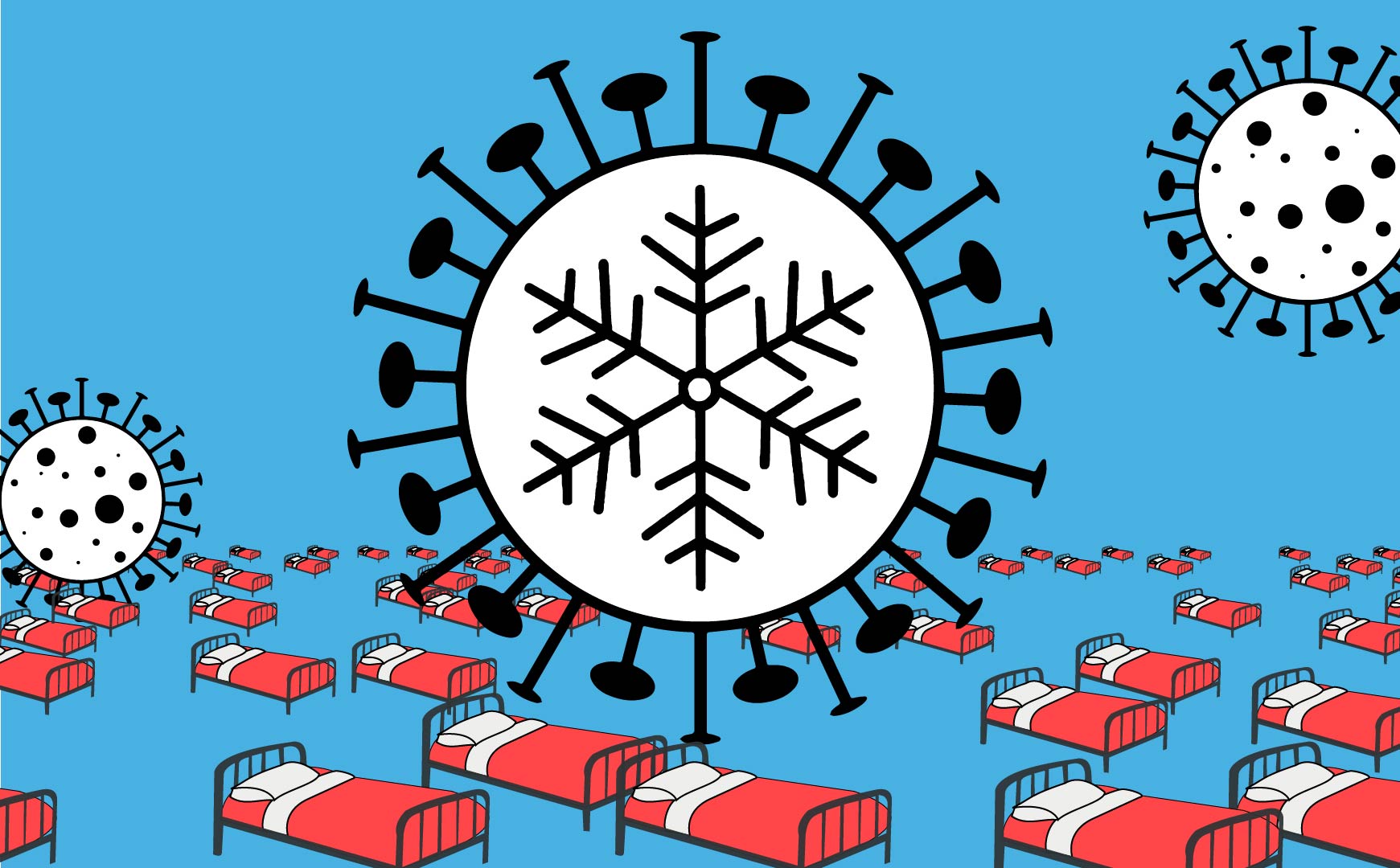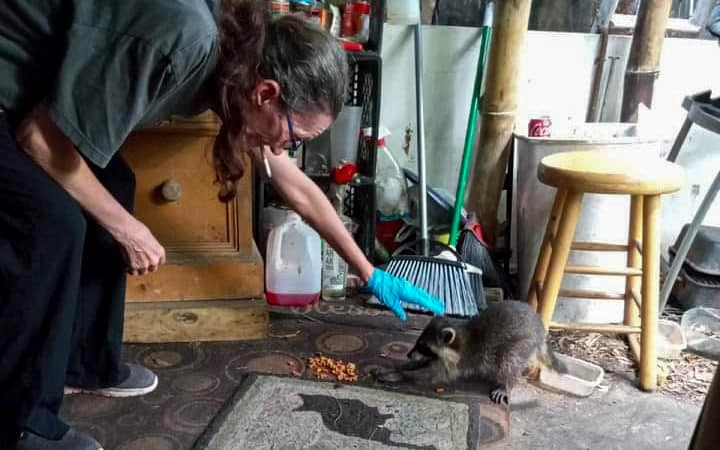With so many shelters closing due to COVID-19, the winter could be a death sentence for the homeless who already face a shortage of winter weather beds
By Andrew Fraieli
With the pandemic raging, shelters are closing from lack of volunteers, and many are forced to turn people away as their small number of socially distanced beds fill up. With the homeless already having a hard time in the winter months, with freezing cold and few winter emergency shelters for the influx of people seeking shelter, what will happen when these problems coincide?
For good reason, shelters now space their beds further apart and taken in fewer people, as these spaces are normally cramped and often go over their capacity in times of crisis. This is a recipe for disaster with the current state of the virus and would spread unimpeded if these precautions weren’t taken, but the precautions also lead to more people on the streets with less access to food and water, less access to toilets and ways to be clean, and less access to general sanitation. If no national plan develops in the coming months to fix this influx on the streets, people will be battling the cold too, and they will die in droves.
This fear of less winter shelter is not novel or unfounded.
Back in March, Springfield, Missouri dropped below freezing for a few nights, but the local emergency cold weather shelter at East Sunshine Church had closed for the season due to health concerns. The shelter could have held about 85 men according to Springfield News-Leader.
The AP reported from Sao Paulo, Brazil in May — a month before the start of their winter — that at least two dozen homeless people had died in the city due to the virus. A local priest started accepting dozens into his parish to sleep, saying the alternative was, “They go to shelters that have infected beds.”
As winter approaches the homeless may have no other choice than to go to a crowded shelter according Robson Mendonça, the head of a local homeless movement in Sao Paulo. Shelters that one local homeless man, Marco Antonio, described as having “too many people, 400 people together. It is easier to get [the coronavirus] there.”
Even in May in New York city the temperature was a legitimate concern during a cold snap. The Metropolitan Transportation Authority (MTA) had begun nightly cleanings of subway cars at this point, from 1 a.m. to 5 a.m. due to COVID-19. On May 9th they removed about 16 homeless people from the subway and brought them into the 37 degree and rainy night. Parked outside several end-of-line stations were a few buses for temporary shelter though because of this weather, according to the New York Post. The homeless removed from the subway the night before had no such temporary shelter.
“…without a carefully constructed winter plan, homeless service facilities may find themselves unable to accommodate the influx of residents…”
Even without the virus, winter is a challenge for the homeless all across the country. In 2019 on a January night, more than a third of all homeless people — 211,293 out of 567,715 — were living unsheltered. This means they were living somewhere not fit for human habitation such as the street, an abandoned building etc., all according to the U.S Department of Housing and Urban Development’s annual report. In the same year there were 291,837 emergency shelter beds and 369,293 permanent housing beds.
The balance of beds available to use and people who can access them is not one to one though — some beds are for men only, others for women and children only. According to the National Alliance to End Homelessness there was a surplus of 15,000 beds for people in families, but a shortage of 192,793 beds for individuals. Even if 200,000 beds were added, that doesn’t mean the beds would be in the regions where people experiencing homelessness might need them most.
The offset to balance the need for more beds in the winter months, when even more of the unsheltered homeless will seek shelter, are seasonal beds or winter emergency shelters — the type of shelter that was shuttered back in March in Springfield, Missouri.
In 2019, there were 21,746 of these seasonal beds according to the National Alliance to End Homelessness; they were not all accessible at the same time though.
A 2010 report by the National Coalition for the Homeless collected information on 50 different emergency winter shelters across the country, including when they opened and found that above 32 degrees, only 20 of those shelters were open.
The first four shelters only opened if the outside temperature dropped to 40 degrees. At 37 and 35 degrees two opened, and at 32 degrees another 14 more shelters opened. The rest are staggered at different temperatures until -10 degrees when the final one opens reaching 37 shelters. The final 13 use personal judgement alone based on weather, capacity and necessity to determine if they open.
This is a common cutoff measurement for these winter services — the temperature — and can lead to people not being able to take advantage of services even in relative cold. The 2010 report states that these “temperature cut-offs are arbitrary and fail to protect the cities’ homeless populations from hypothermia. Still other services are offered only during specific months, although the weather may be cold during other times.”
For context, hypothermia can set in as warm as 50 degrees without proper protection, as it’s solely defined as the body temperature dropping below 95 degrees. Even a South Florida county issued a cold weather emergency for the homeless in January when the temperature dropped to “low 50s to high 40s.”
An infographic published in 2014 by the National Coalition for the Homeless shows a similar discrepancy in temperatures needed for a shelter to open, and how low of a temperature it needs to be.
In that same winter weather report they state that “without a carefully constructed winter plan, homeless service facilities may find themselves unable to accommodate the influx of residents” due to the cold. This was for winter in 2010. This morbid statement takes no consideration of the current historical economical crash, record unemployment that will certainly cause homelessness to rise, nor the global pandemic that already has shelters barely coping with reduced beds and reduced volunteers.
According to a National Alliance to End Homelessness estimate in March, “400,000 new [beds] are needed to prevent the spread of the virus and care for the sick. These accommodations would allow for social distancing, quarantine, and isolation for people who are typically in crowded shelter settings or living unsheltered.”
How many of these shelters will still be closed in winter due to a lack of volunteers and lack of space to properly social distance? How many winter shelters simply won’t open at all? There are 400,000 beds that need to be added when already so many shelters have closed in so many places, and when in other places they may never have even existed at all.
There needs to be a state or federal plan for this winter accepting the possibility that COVID-19 will still be a problem, especially for people experiencing homelessness who cannot protect themselves from the virus nor the cold. Otherwise, wholly preventable deaths will happen, and this winter will see a record in deaths in the streets.



